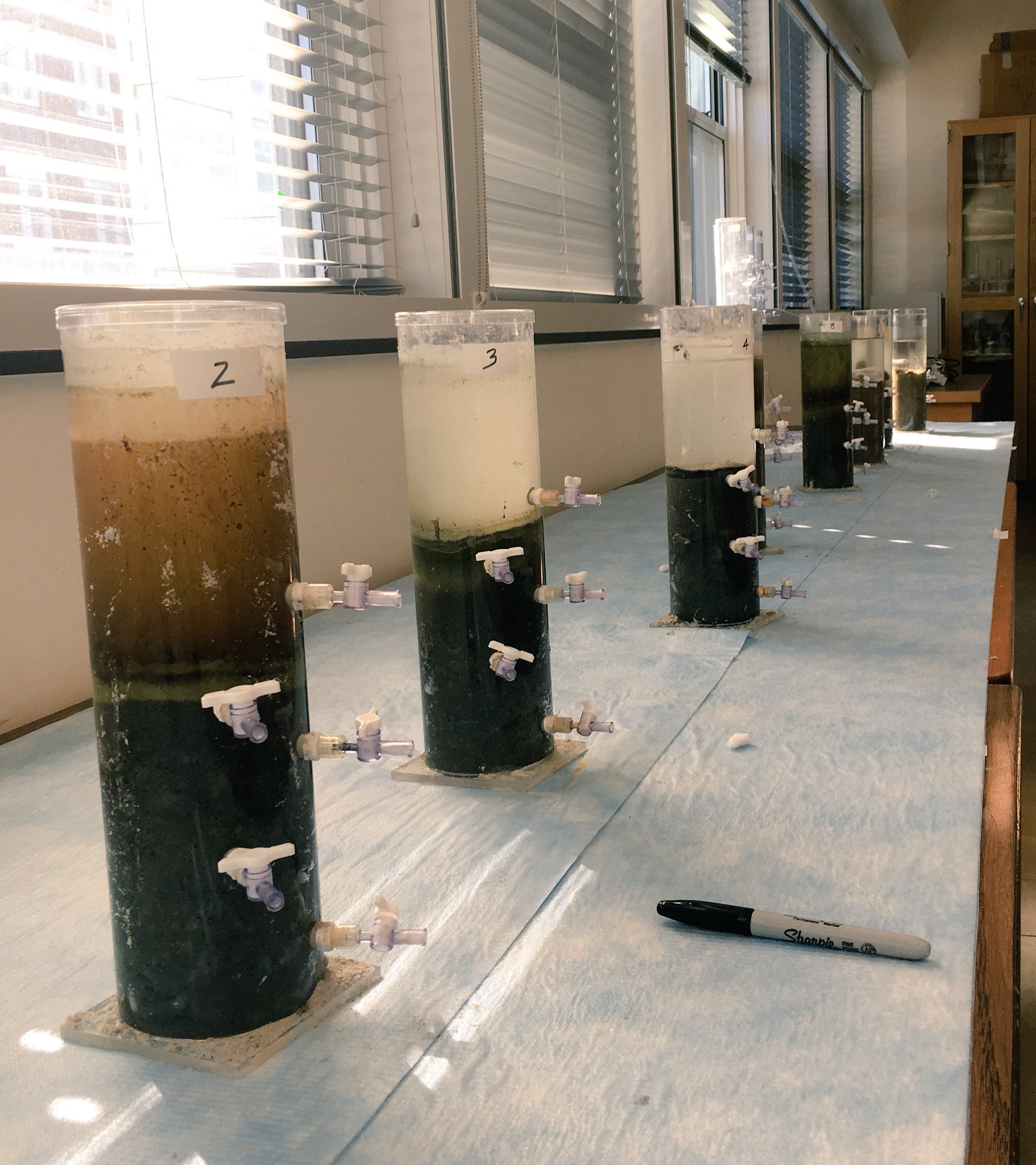BIOLOGICAL APLICATIONS AND TECHNOLOGY
AQUATIC MICROORGANISMS
Team 7: Serasidis Konstantinos, Tsinoglou Makrina
For the composition of
the columns we used: 2 plastic
bottles (1,5 L) that the top was cut and removed, 2 raw
eggs, sheets of newspaper, a shovel, plastic bawl and plastic membrane.
After mixing the mud with the enrichment materials (egg and sheets of
newspaper), we filled 1/3 of the bottle with the mix, then we added mud without
enrichment materials for another 1/3 of the bottle. Finally, water from the
lake was added to fill the bottle. This method was used for the second column
too.
In order to observe the development of the microorganisms without light
effect, one of the bottles was covered with foil. Both of the bottles were
placed at an outdoors environment.
In our experiment we will observe
possible differences at the growth of microorganisms in the two Winogradsky
columns, with presence of light at the first column and completely dark
environment at the second one. The hypothesis of the experiment is that algae and other aerobic
phototrophs will be present along the surface and water of the upper half of
the column that was held in light and absent in the column that was held in
complete dark. Green growth is often attributed to these organisms so the result
will be visually observed.
 |
| 1. control column |
 |
| 2. column (dark) |
After one week of development there were no noticeable
differences between
the two columns.
 |
| 1. control column |
 |
| 2. column (dark) |










